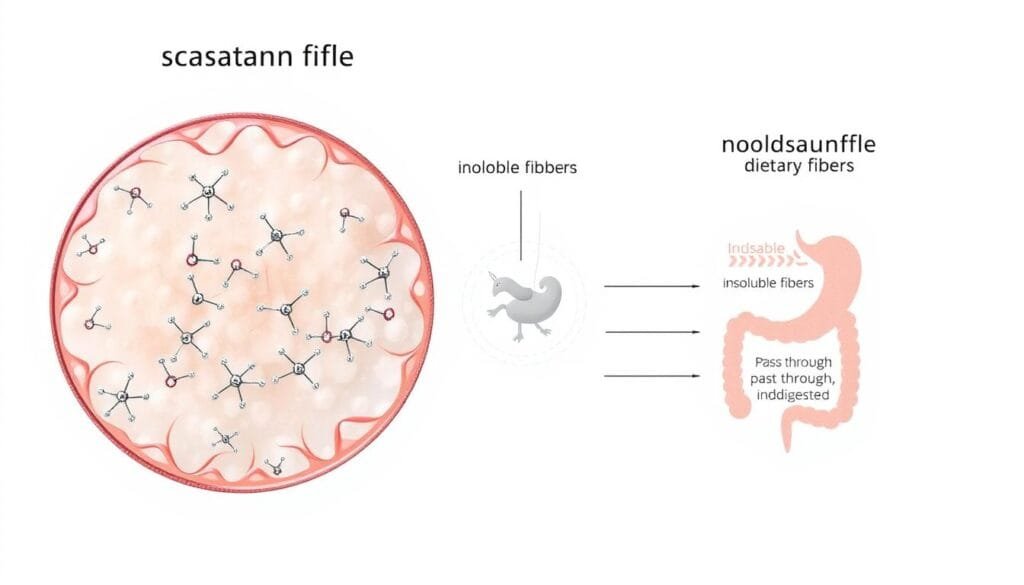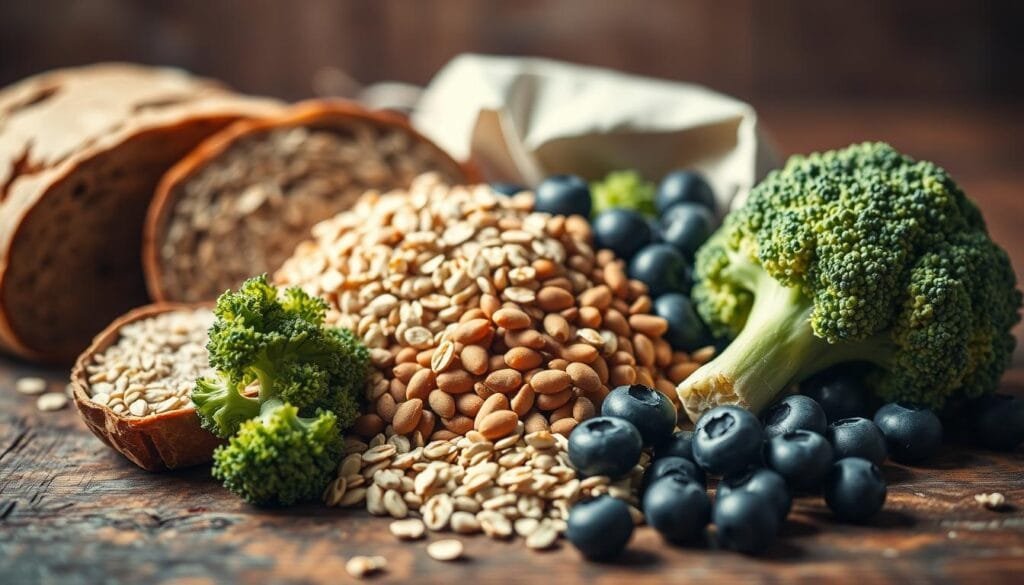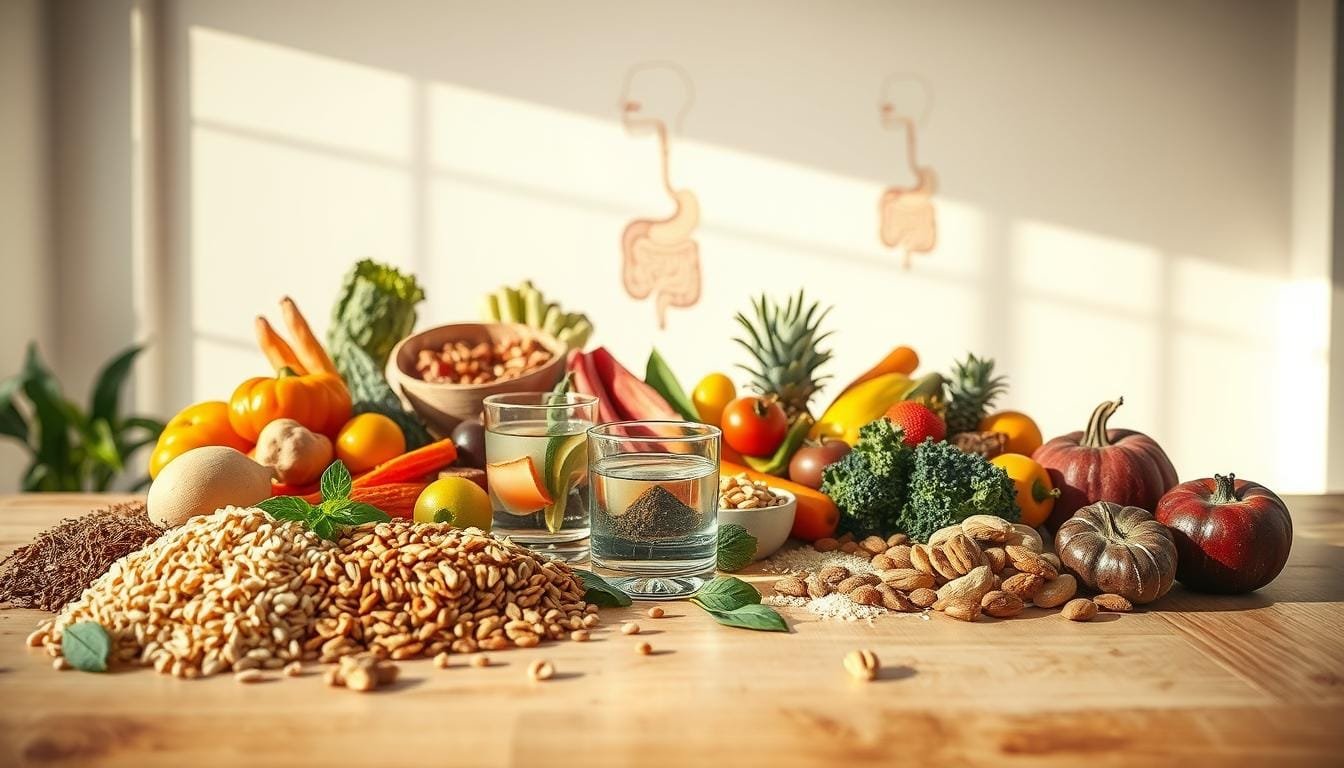Currently Empty: RM0.00
Did you know that 95% of people worldwide don’t get enough fiber in their diet? Despite its many benefits, fiber can sometimes cause discomfort, leaving many unsure how to balance nutrition and digestive ease.
In Malaysia, 90% of adults fall short of daily fiber recommendations—25g for women and 38g for men. This gap often leads to common digestive issues, even though fiber is essential for overall health.
Wellness Concept offers a personalized approach to managing these symptoms. Their experts combine diet, hydration, and exercise strategies to help clients enjoy fiber’s benefits without discomfort. Available seven days a week (9:30 AM–6:30 PM), they provide consultations via WhatsApp at +60123822655.
Key Takeaways
- Most people globally don’t meet daily fiber needs.
- Malaysians often struggle with digestive discomfort from low fiber intake.
- Wellness Concept tailors solutions for balanced nutrition and comfort.
- Their team is available every day for expert guidance.
- Holistic strategies address diet, hydration, and activity levels.
Understanding Stomach Cramps from Fiber
Balancing fiber can be tricky, especially for sensitive stomachs. While it supports gut health, sudden increases may trigger symptoms like bloating or gas. Knowing how fiber interacts with the body helps manage these reactions.
How Fiber Works in Digestion
Soluble fiber dissolves in water, forming a gel that slows digestion. Insoluble fiber adds bulk, aiding regularity. Both types ferment in the gut, but too much too soon strains the system.
Recognizing Common Symptoms
Overdoing fiber may cause:
- Abdominal pain or cramping
- Excessive gas from bacterial fermentation
- Bloating or distension
- Alternating constipation and diarrhea
For example, swapping white rice for brown overnight often leads to discomfort. Gradual changes let the gut adapt.
Why Too Much Fiber Causes Discomfort
A sudden fiber boost can overwhelm the digestive system, leading to discomfort. The body needs time to adapt, especially when switching from low-fiber to high-fiber foods. Understanding the causes helps manage these reactions effectively.

Soluble vs. Insoluble Fiber: Key Differences
Not all fiber works the same way. Soluble fiber dissolves in water, forming a gel that slows digestion. Insoluble fiber adds bulk, speeding up food movement. Their contrasting roles impact how the body responds.
| Type | Function | Common Sources | Potential Issues |
|---|---|---|---|
| Soluble | Slows digestion, feeds gut bacteria | Oats, apples, beans | Gas if overconsumed |
| Insoluble | Adds bulk, prevents constipation | Whole grains, celery | Bloating if introduced too fast |
The Role of Gut Bacteria in Digestion
Gut bacteria ferment fiber, producing short-chain fatty acids that support health. However, bacterial overgrowth (like SIBO) can worsen fermentation, causing gas and pain. About 20% of people have heightened sensitivity to these effects.
For example, IBS patients often react strongly to high-fiber foods. Gradual increases and probiotic support help balance the digestive system.
How to Reduce Stomach Cramps from Fiber
Small tweaks in daily habits can make fiber easier on the system. Whether increasing intake or managing symptoms, a balanced approach works best.
Adjusting Your Intake Gradually
Sudden spikes in fiber intake often backfire. Experts recommend adding just 5g per day to let the gut adapt. Try this 4-step plan:
- Week 1: Swap one refined grain (e.g., white rice) for whole grains.
- Week 2: Add a serving of legumes or nuts daily.
- Week 3: Include two extra vegetable portions.
- Week 4: Track reactions using Wellness Concept’s food journal template.
“Slower transitions reduce gas and bloating by 60% compared to rapid changes.”
Prioritizing Hydration and Movement
Water is fiber’s partner—it helps soluble fiber form a gel and prevents blockages. Aim for 35ml per kg of body weight daily. In Malaysia’s heat, add electrolytes with coconut water or cucumber slices.
Exercise boosts digestion by 40%. Three routines to try:
- Post-meal walks: 10 minutes aids motility.
- Yoga twists: Stimulates intestinal movement.
- Cycling: Gentle cardio reduces bloating.
Wellness Concept’s team tailors these dietary changes to individual needs. Their plans consider local foods, hydration needs, and activity levels for lasting comfort.
Best Dietary Practices for Fiber Sensitivity
Choosing the right foods can ease digestion for those with fiber sensitivity. A balanced fiber diet includes gentle options and mindful preparation to avoid discomfort. Here’s how to navigate low- and high-fiber choices for a happier gut.

Low-Fiber Foods to Soothe Your Gut
For sensitive digestion, opt for easily digestible foods like white rice, peeled apples, or steamed fish. These are staples in Malaysian cuisine and minimize strain on the gut. Other gut-friendly picks:
- Bananas: Rich in potassium, gentle on digestion.
- Eggs: Soft-boiled or scrambled for easy absorption.
- Tofu: A low-fiber protein source.
Peeling fruits and overcooking vegetables slightly reduces their fiber intake, making them safer for sensitive systems.
High-Fiber Foods to Approach with Caution
Beans, cruciferous veggies, and whole grains may trigger bloating if introduced too quickly. Ranked by gas potential:
- Legumes (lentils, chickpeas)
- Broccoli and cabbage
- Whole-grain bread
Soaking beans overnight or fermenting them (like tempeh) can lower their fiber content. Pairing high-fiber foods with probiotics (e.g., yogurt) also aids digestion.
“Slowly increasing fiber lets your gut adapt without distress.”
For Malaysian favorites like nasi lemak, try using half white rice and half brown rice initially. This balances flavor and diet needs while reducing bloating risks.
The Role of Fiber Supplements
Fiber supplements can be a helpful solution when dietary sources fall short. They bridge the gap for those struggling to meet daily fiber needs but require careful use to avoid side effects.
When to Consider Supplements
Supplements work best in three scenarios:
- Limited dietary options: Busy schedules or food intolerances.
- Digestive conditions: IBS or constipation management.
- Transition periods: Gradually increasing fiber intake.
Common fiber supplements in Malaysia include psyllium husk, inulin, and wheat dextrin. Psyllium absorbs water to ease digestion, while inulin feeds gut bacteria. Their effects vary, so professional guidance is key.
Risks of Overusing Fiber Supplements
Excessive use may block nutrient absorption or cause bloating. Follow this 4-step protocol:
- Start with half the recommended dose.
- Drink 250ml water per supplement serving.
- Monitor for gas or discomfort.
- Adjust timing (e.g., avoid bedtime).
Risk increases when combining supplements with medications like blood thinners. Wellness Concept screens clients for interactions during consultations, ensuring safe usage.
“Supplements should complement—not replace—whole foods for balanced nutrition.”
Wellness Concept’s Holistic Solutions
Wellness Concept tailors solutions for lasting digestive comfort. Their personalized approach combines science-backed strategies with local dietary preferences. Clients experience fewer symptoms while enjoying balanced meals.
5 Components of Personalized Gut Health Plans
Each plan includes:
| Component | Purpose | Example |
|---|---|---|
| Fiber Adjustment | Gradual increases to avoid bloating | Swap white rice for quinoa in stages |
| Hydration Tracking | Optimizes digestion | Coconut water for electrolytes |
| Microbiome Testing | Identifies bacterial imbalances | Stool analysis with expert review |
| Activity Pairing | Enhances nutrient absorption | Post-meal walks |
| Progress Reviews | Tweaks based on feedback | Bi-weekly WhatsApp check-ins |
Microbiome Testing Explained
Clients receive a system-friendly gut bacteria analysis. The test reveals:
- Key bacterial strains (e.g., Bifidobacterium levels)
- Fermentation efficiency markers
- Personalized probiotic recommendations
Results guide changes to diet and supplements. 92% report reduced discomfort within 4 weeks.
Connect With Wellness Concept
Expert help is just a message away:
- WhatsApp: +60123822655 (Priority responses)
- Hours: Mon–Fri 9:30 AM–6:30 PM, Sat–Sun 10 AM–5 PM
- Branches: KL (Jalan Tun Razak) and PJ (SS2) with free parking
“Clients who follow tailored plans see 3x faster results than generic advice.”
Discover more about the health benefits of fiber in their detailed guide.
Conclusion
Making fiber work for your body doesn’t have to be complicated. Start small—swap refined grains for whole grains, hydrate well, and move daily to ease symptoms.
Sustainable habits beat quick fixes. Pair high-fiber diet choices with probiotics, like yogurt with local fruits, for better digestion over time.
Wellness Concept’s team helps tailor fiber intake to your health goals. Their experts adjust plans weekly, ensuring comfort and progress.
Ready for a happier gut? Message them on WhatsApp at +60123822655 today. Slow, steady changes lead to lasting results.
FAQ
How does fiber affect digestion?
Fiber helps regulate digestion by adding bulk to stool and promoting bowel movements. However, too much can cause bloating, gas, and cramps if the body isn’t used to it.
What are common symptoms of excessive fiber intake?
Overdoing fiber may lead to bloating, gas, stomach cramps, diarrhea, or constipation. These issues often arise when intake increases too quickly.
What’s the difference between soluble and insoluble fiber?
Soluble fiber dissolves in water, forming a gel that slows digestion, while insoluble fiber adds bulk to stool. Both are important but can cause discomfort if unbalanced.
How can I reduce discomfort from too much fiber?
Gradually increase fiber intake, drink plenty of water, and pair high-fiber foods with low-fiber options to ease digestion.
Which foods should I avoid if I’m sensitive to fiber?
Beans, cruciferous veggies, and whole grains may trigger discomfort. Opt for cooked vegetables, white rice, or lean proteins until symptoms improve.
Are fiber supplements safe?
Supplements can help, but overuse may worsen bloating or constipation. Always consult a healthcare provider before adding them to your routine.
Does Wellness Concept offer personalized dietary plans?
Yes! Their experts create tailored meal plans to support digestive health while balancing fiber intake for comfort and wellness.



